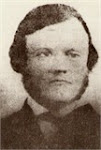The UW-Madison Continuing Studies program offers many opportunities for learning long after your formal schools days are a hazy memory. My favorites so far are the Continuing education (noncredit) classes and in particular the excellent and expanding offerings of the History Department. In the previous years I've taken a short course on the effigy mound builders of the Four Lakes region (including a field trip to mounds in the area in an old yellow school bus). I've also taken several courses in medieval history.
This year, I'm taking History and mystery: the evolution of the private eye novel:
In this class we trace the history of the private eye novel, beginning with the British Golden Age in Agatha Christie’s The Mysterious Affair at Styles, followed by the American response with Raymond Chandler’s The Big Sleep. We then move to the second Golden Age with Walter Moseley’s Devil in a Blue Dress, and end with literary fiction: Jonathan Lethem’s Motherless Brooklyn.
Instructor: Helene Androski
In mid-April, I get a dose of English history and Shakespeare in the course, Shakespeare’s history cycle: the Henry plays
This course examines Shakespeare’s celebrated cycle of plays dramatizing the troubled reign of Henry IV, who usurped the throne, and the evolution of his son, Prince Hal, from youthful prankster to England’s famous warrior king, Henry V. We encounter Hal’s companion Falstaff, who may be Shakespeare’s greatest comic character, and discuss the role of comedy in Shakespeare’s understanding of history.
Instructor: Michael Hinden
T, Apr 20-May 4, 7-9 pm, Chazen Museum, 800 University Ave, 0.6 CEU, $35, Program #5711
Registration print form
Registration online
Monona's own Jim Draeger is a perennial lecturer on Wisconsin architecture. My schedule has never matched his class so I have that pleasure to look forward to. His current offering is What’s In Store: The History and Evolution of Wisconsin Commercial Buildings
Commercial areas of communities reflect the economic vitality of cities. In an historical sense they illustrate the rise and fall of commercial activity, the evolution of building materials and technology, and periodic changes in public tastes and consumption patterns. This class will explore the architectural and historical evolution of commercial buildings in Wisconsin from early statehood to the mid-twentieth century through three slide-illustrated lectures.
Instructor: Jim Draeger
T, Mar 23-Apr 6, 6:30-8 pm, Pyle Center, 702 Langdon St, 0.5 CEU, $35, Program #5716
Registration print form
Registration online
It's the Wisconsin Idea at work - or leisure.
















Doug-I thought you might like this article about Detroit. I studied urban issues in college and this one is quite interesting.
ReplyDeletehttp://www.washingtontimes.com/news/2010/mar/09/detroit-looks-at-downsizing-to-save-city/
What do you do with your spare time?
ReplyDeleteDoug,
ReplyDeleteHave you noticed that Google directions on their map function has added bike as an option?
It is not the best function, it took me down Monona Drive from Ken's to get to the pool.
HP